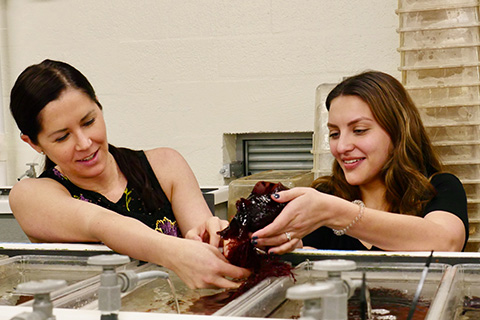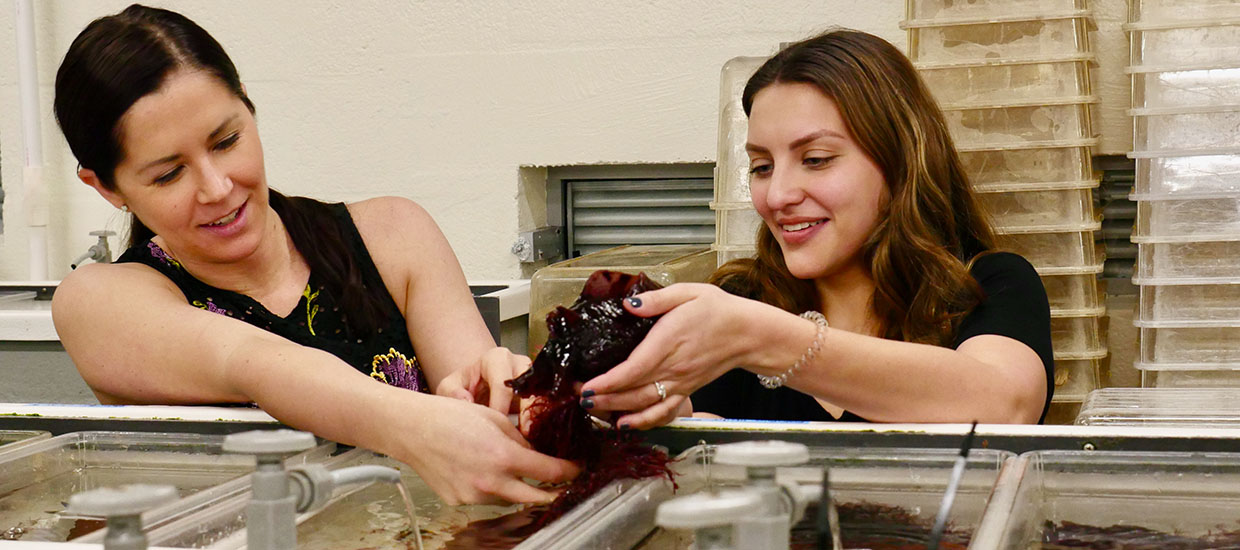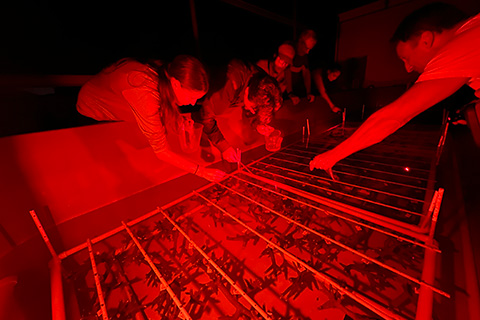A scientist takes a boat into the Everglades waterways and up the Gulf coast, gathering samples to evaluate in the lab for Karenia brevis, the cause of persistent harmful algal blooms. Another, wearing a flame-orange jumpsuit, is on a Coast Guard cutter in the Arctic collecting zooplankton that play a pivotal role in observing global climate change. Yet another scuba dives at midnight in the Florida Keys in the turbid waters of hurricane season to study the once-a-year staghorn coral spawning. Back at Rosenstiel School are researchers who go between their flow cytometers and toadfish tanks to retrieve genomic clues about ammonia toxicity that could ultimately help humans with early-onset liver disease.
Being situated adjacent to the only coral reef ecosystem of the continental United States, next to the Gulf Stream, and near the Caribbean Sea offers a variety of research venues; these scenarios are but a fraction of the cutting-edge biological research happening at the Rosenstiel School. The Rosenstiel School provides its students and faculty with outstanding field, laboratory, and quantitative research opportunities.
Within the MBE department, our personnel have ready access to the NOAA Atlantic Oceanographic and Meteorological Laboratories (AOML), the National Marine Fisheries Service (NMFS), Southeast Fisheries Center (SEFC), the nearby National Florida Keys Marine Sanctuary, and the various associated research disciplines within the University of Miami.









